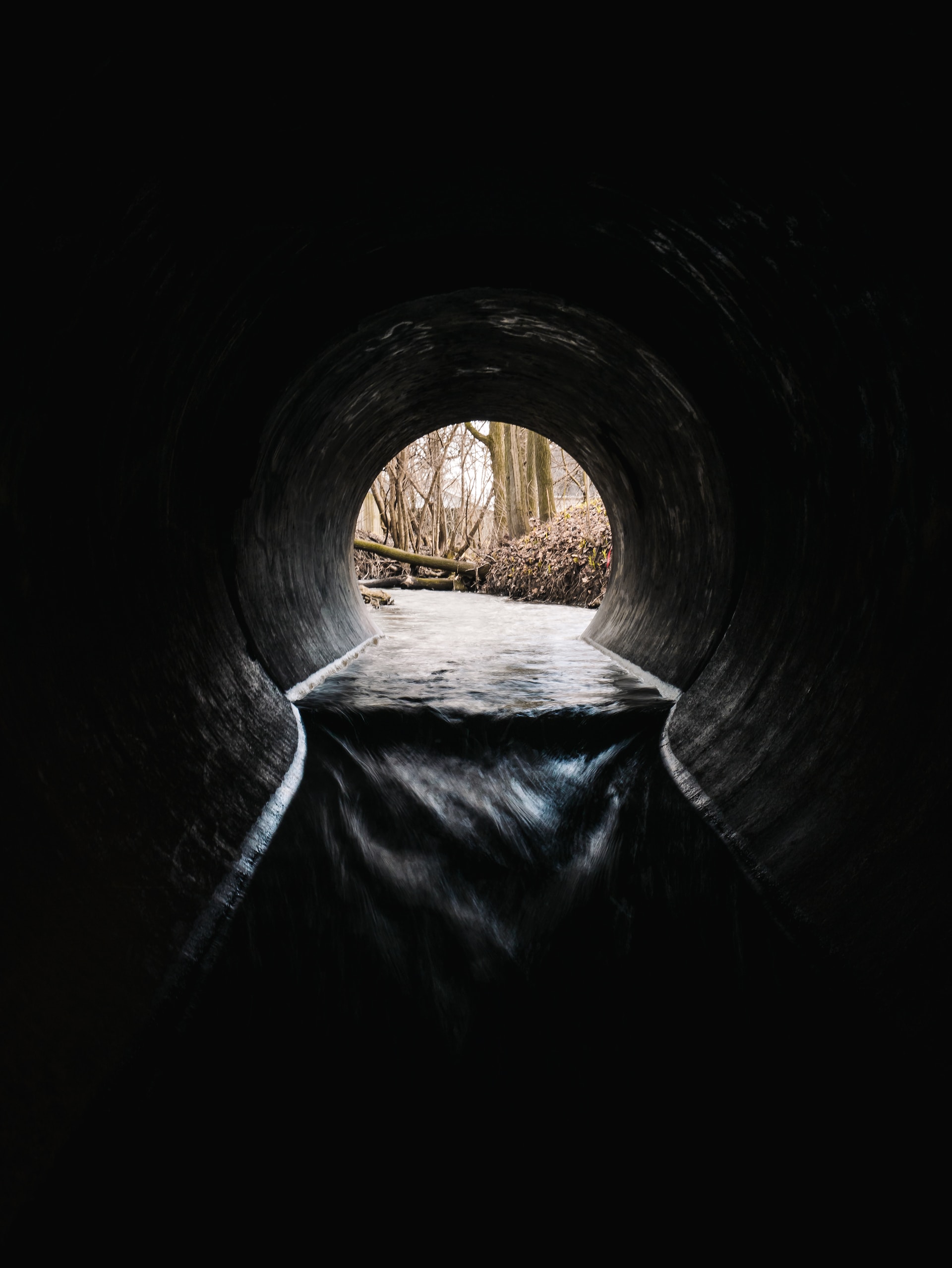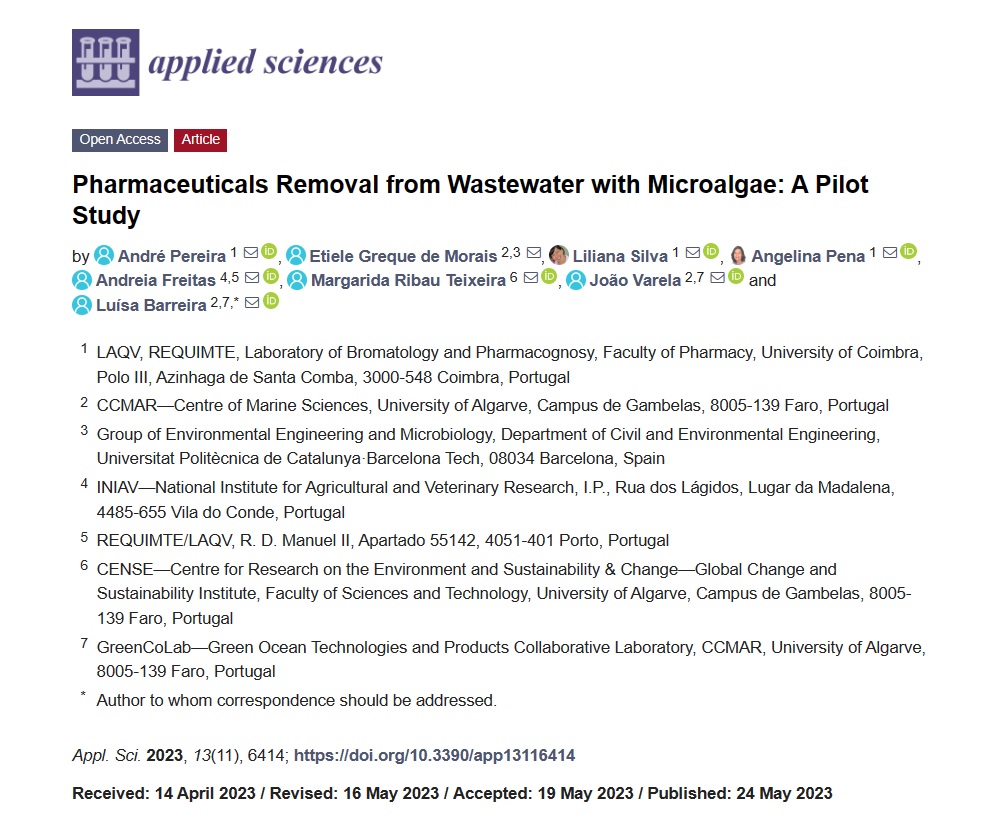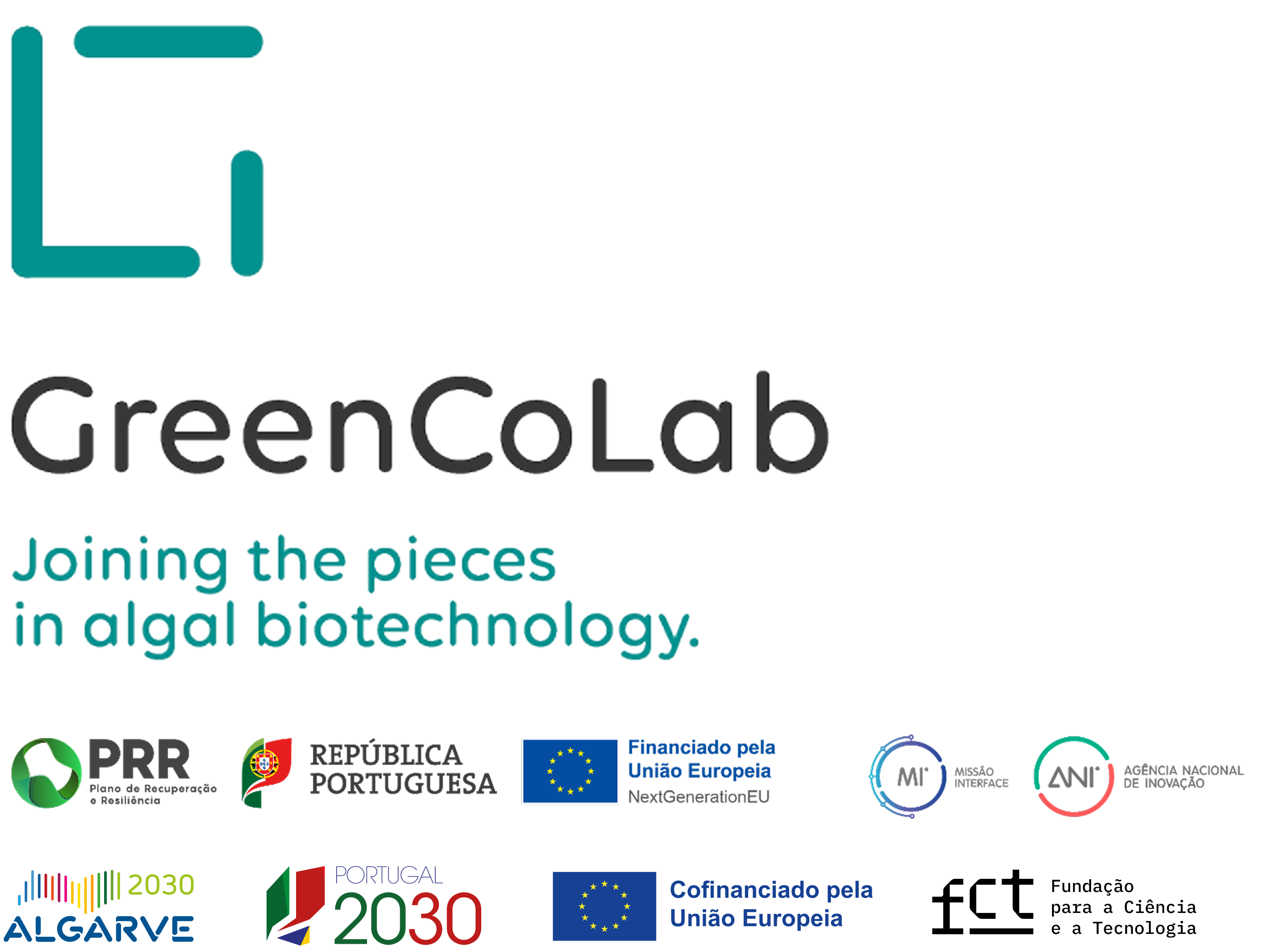

TITLE
Pharmaceuticals Removal from Wastewater with Microalgae: A Pilot Study
JOURNAL
Applied Sciences
AUTHORS
André Pereira, Etile Greque de Morais, Liliana Silva, Angelina Pena, Andreia Freitas, Margarida Ribau Teixeira, João Varela, Luísa Barreira
ABSTRACT
Urban wastewaters contain pharmaceuticals that are not appropriately removed in conventional wastewater treatments, limiting treated water reuse. Microalgae have been shown to remove pharmaceuticals from urban wastewater in laboratory trials, but few studies have been conducted under natural conditions. In this work, pharmaceutical removal was assessed in a pilot-scale microalgal tertiary wastewater treatment in real conditions. Even after secondary treatment, the water contained measurable amounts of pharmaceuticals (an average of 218.4 ng/L) that significantly decreased to 39.83 ng/L at the exit of the microalgal system. Pharmaceuticals’ average removal rates were slightly higher in the summer (79.1%) than in autumn (71.1%). Antibiotics and antipsychotics were better removed (88.8 and 86.4%, respectively) than antihypertensives (75.3%) and others (Bezafibrate and Diclofenac; 64.0%). Physicochemical characteristics of the wastewater influenced pharmaceutical removal; significant positive correlations were observed between anti-hypertensive drug removal and ammonium concentration (r = 0.53; p < 0.05), total nitrogen and total pharmaceutical removal (r = 0.46; p < 0.05), and total nitrogen and antipsychotic drug removal (r = 0.47; p < 0.05). The results demonstrate the effectiveness of microalgal tertiary treatment in the removal of pharmaceuticals.



